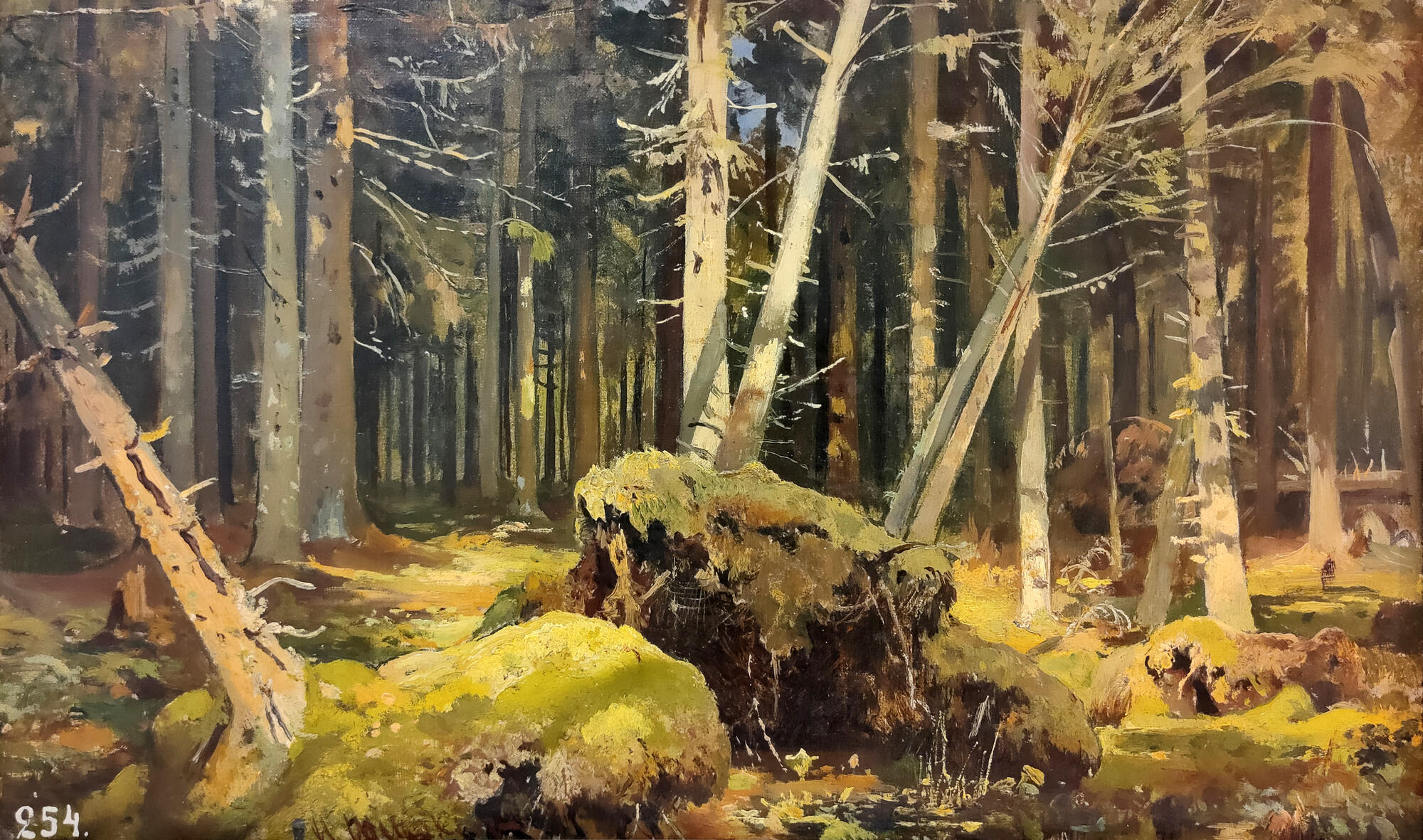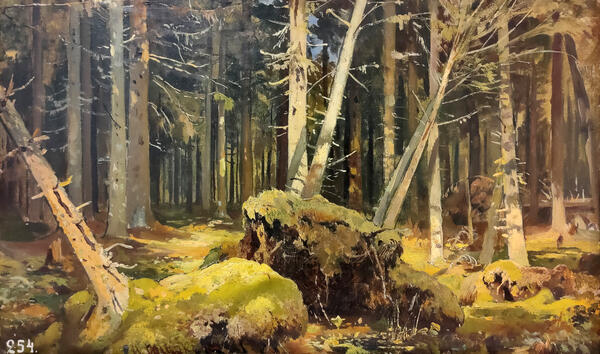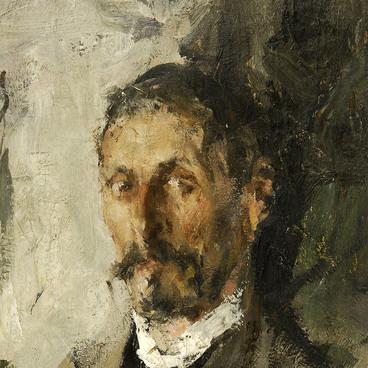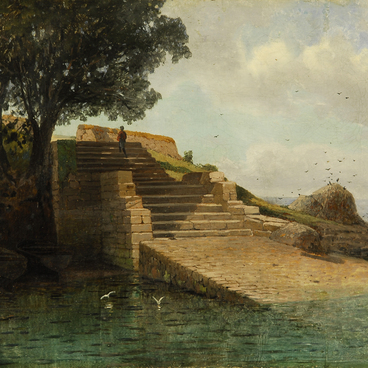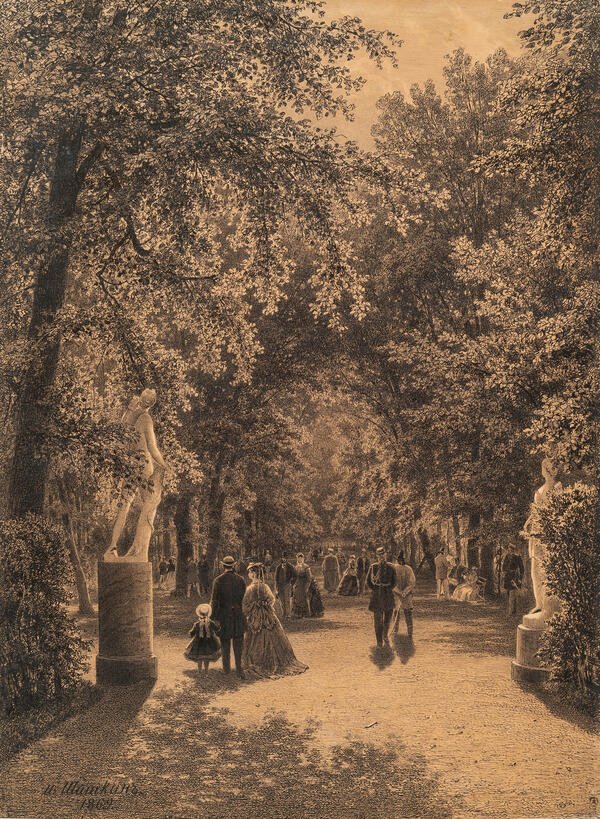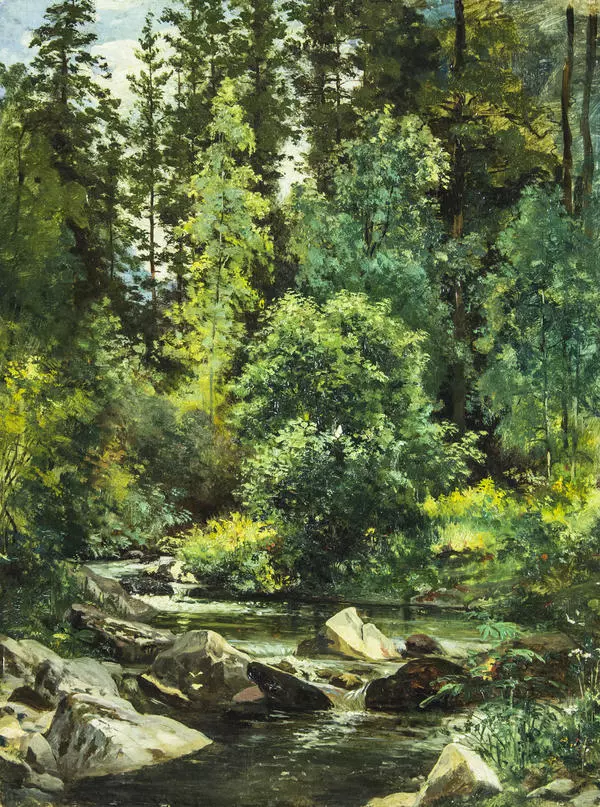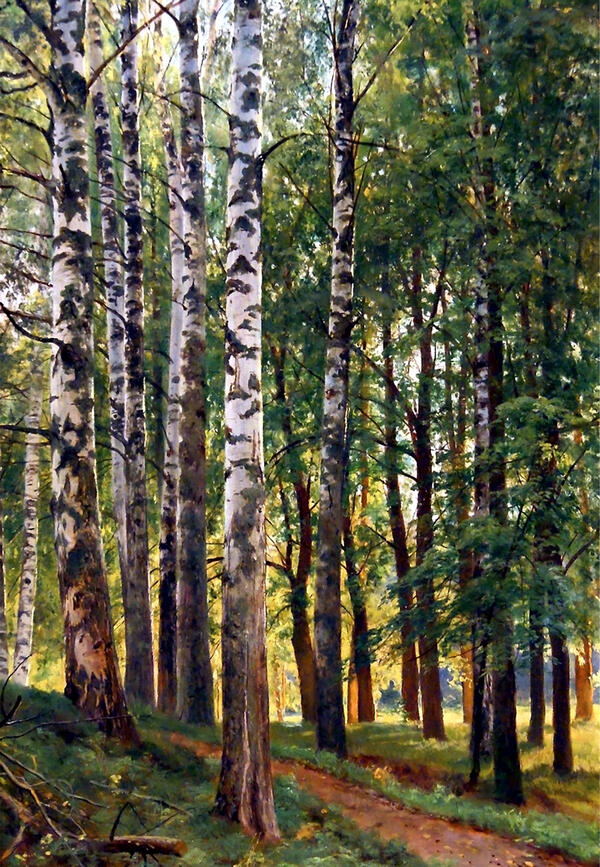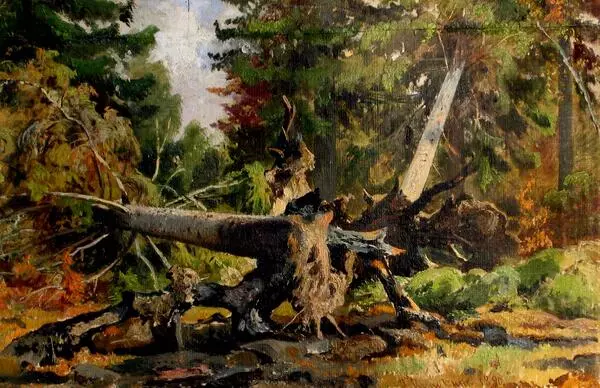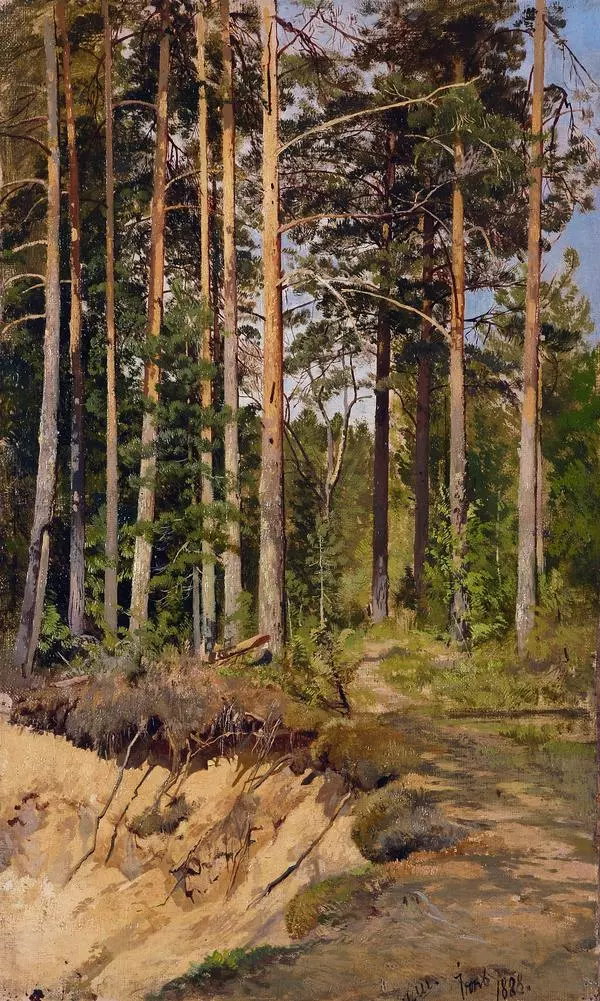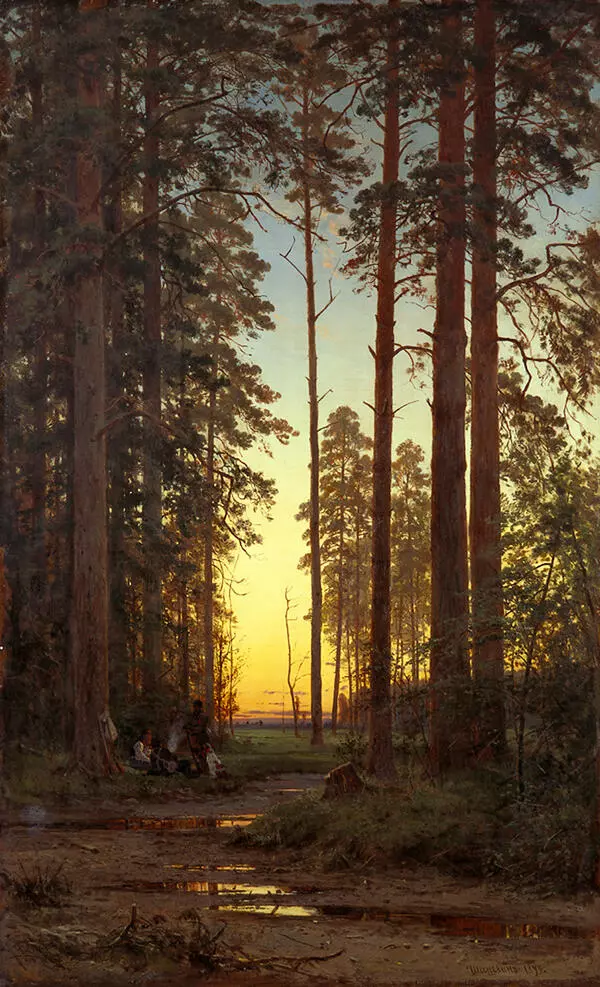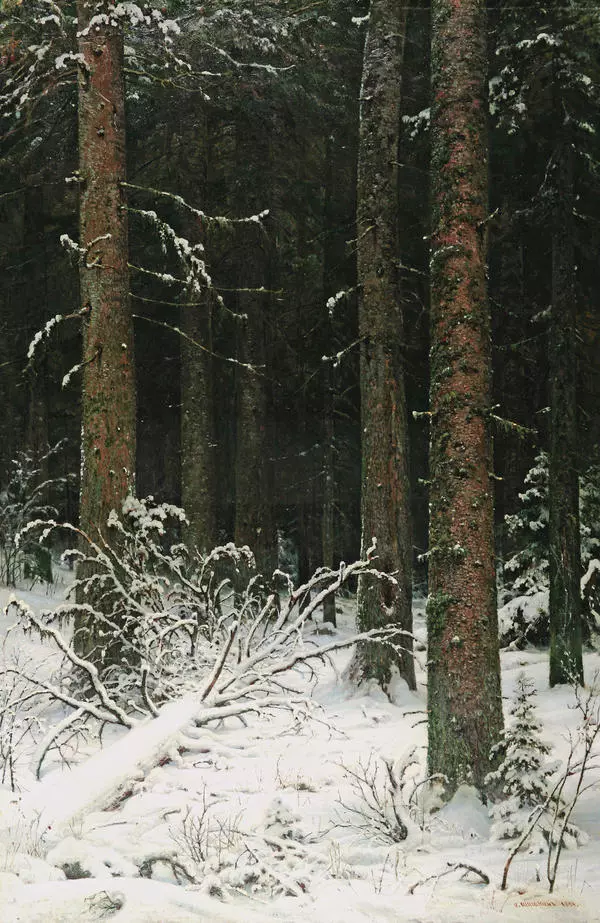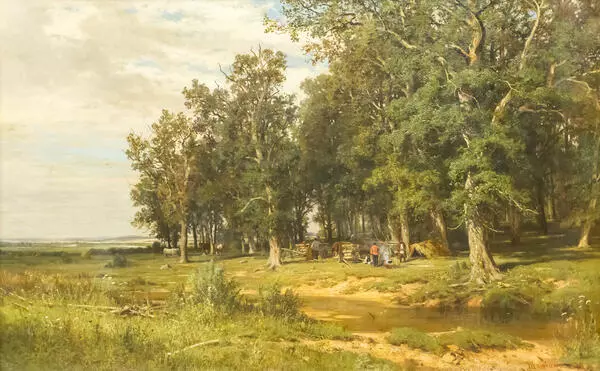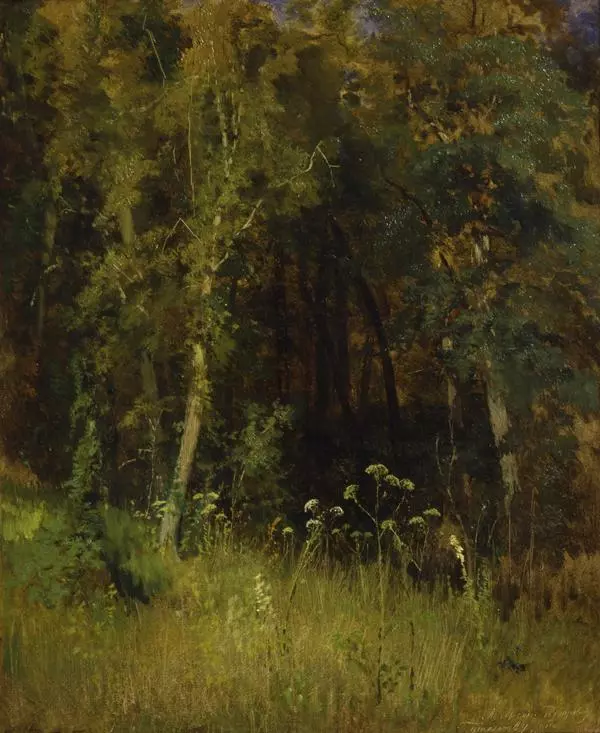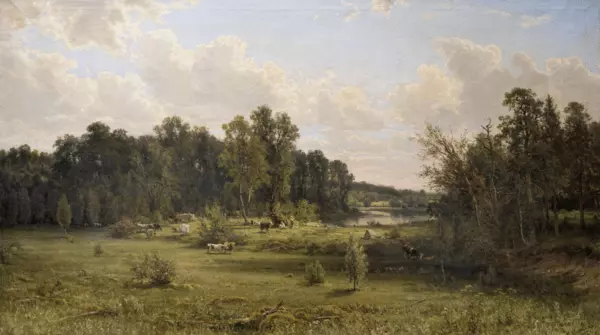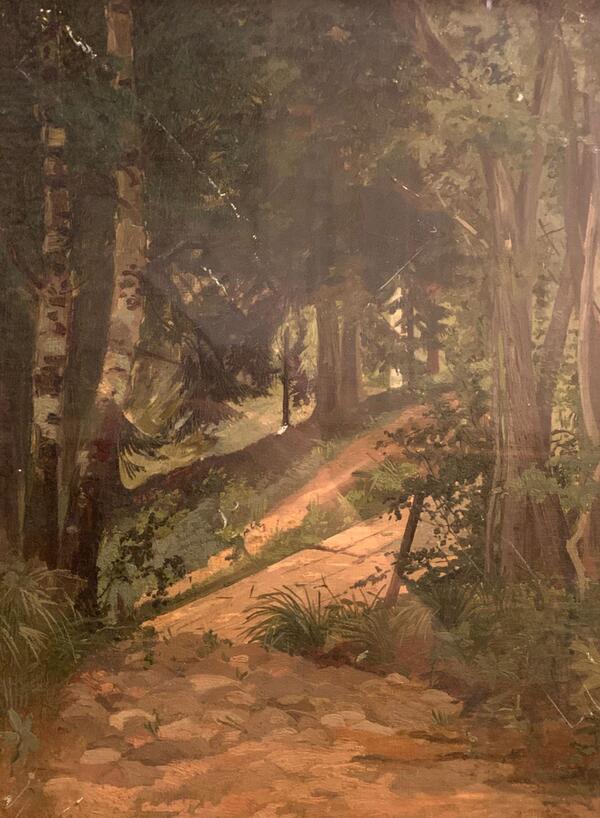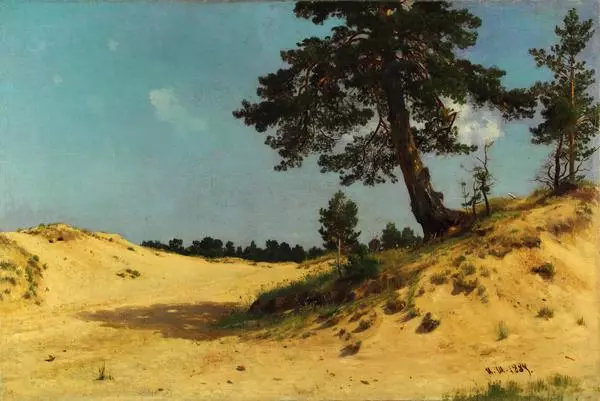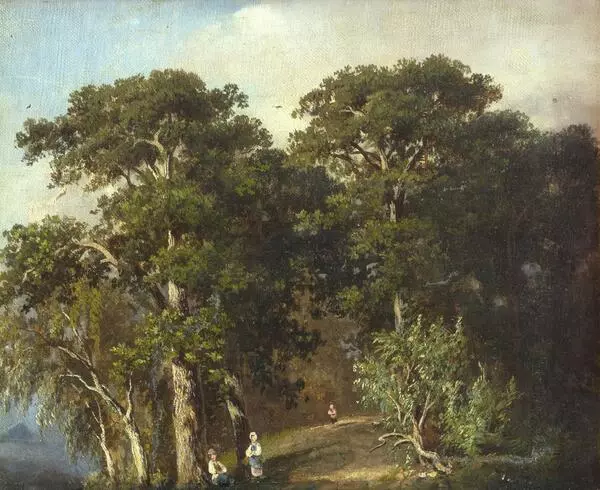Ivan Shishkin created this study called Forest approximately around the end of the XIX century. It depicts uprooted conifers with raised layers of earth. The bare trunks in the foreground are brightly illuminated by the scorching sun. A bluish haze is visible in the dense shadow of the distant trees. The artist painted light and air in this quick study with ease: moisture evaporates from the damp layers of the earth, rises, and softly enshrouds the landscape. The sun glares on the reddish pine bark.
In this study, the artist used a compositional technique that is frequently encountered in his work — the tops of the trees seem to be cut off by the edge of the canvas. This is how the artist achieves the illusion that the viewer is inside a real forest, and the powerful, centuries-old pine trees do not fit into the person’s field of vision.
Ivan Shishkin lived from 1832 to 1898. Love for these landscapes is associated with the artist’s childhood: he grew up in Yelabuga, where forest expanses stretch along the banks of the Kama River. Many researchers agree that it was the Yelabuga forests that determined his favorite painting subject matter.
In 1852, he entered the Moscow School of Painting and Sculpture. Back then, when his works were still not well developed, he dreamed of getting as close to nature as possible, and constantly sketched views and landscape details that were interesting to him. The entire school gradually learned about his drawings. Fellow students noted that ‘Shishkin paints views like nobody else has ever painted before him: he just makes a field, a forest, or a river come out as beautiful as the views in Switzerland.’
The artist experimented by combining different brushes and strokes, honing his skills painting forms and conveying the most delicate shades of color. This painstaking work is especially noticeable in the works done in the late 1880s — for example, in the landscapes Pines Illuminated by the Sun, Oaks. Evening, or Morning in the Pine Forest. His contemporaries were amazed by his talent at experimenting incessantly but, at the same time, managing to achieve realism.
Overgrown thickets, with their mossy soil strewn with pine needles, became Ivan Shishkin’s favorite subject. Ivan Shishkin was called “the czar of the forest”. It is believed that he created a collective image of the Russian forest of epic proportions with his works. The artist passed away in March 1898. He died at his easel, while working on a new painting.
Ivan Shishkin lived from 1832 to 1898. Love for these landscapes is associated with the artist’s childhood: he grew up in Yelabuga, where forest expanses stretch along the banks of the Kama River. Many researchers agree that it was the Yelabuga forests that determined his favorite painting subject matter.
In 1852, he entered the Moscow School of Painting and Sculpture. Back then, when his works were still not well developed, he dreamed of getting as close to nature as possible, and constantly sketched views and landscape details that were interesting to him. The entire school gradually learned about his drawings. Fellow students noted that ‘Shishkin paints views like nobody else has ever painted before him: he just makes a field, a forest, or a river come out as beautiful as the views in Switzerland.’
The artist experimented by combining different brushes and strokes, honing his skills painting forms and conveying the most delicate shades of color. This painstaking work is especially noticeable in the works done in the late 1880s — for example, in the landscapes Pines Illuminated by the Sun, Oaks. Evening, or Morning in the Pine Forest. His contemporaries were amazed by his talent at experimenting incessantly but, at the same time, managing to achieve realism.
Overgrown thickets, with their mossy soil strewn with pine needles, became Ivan Shishkin’s favorite subject. Ivan Shishkin was called “the czar of the forest”. It is believed that he created a collective image of the Russian forest of epic proportions with his works. The artist passed away in March 1898. He died at his easel, while working on a new painting.
